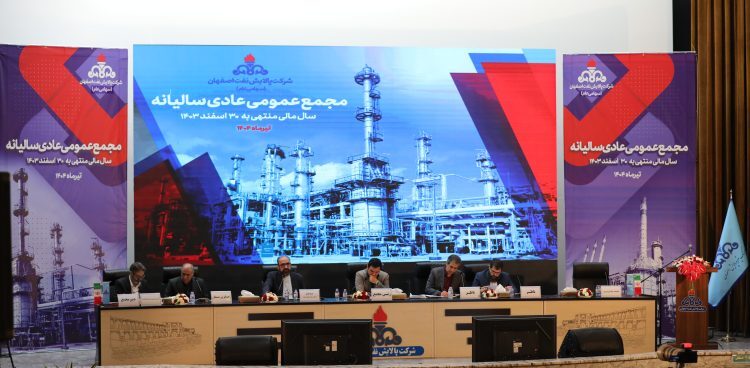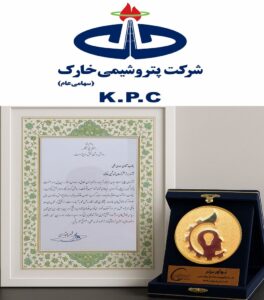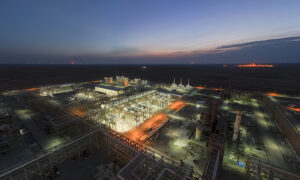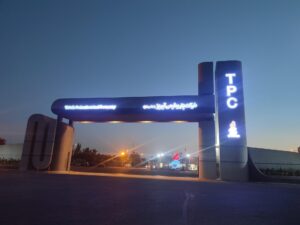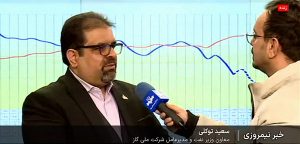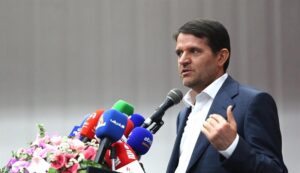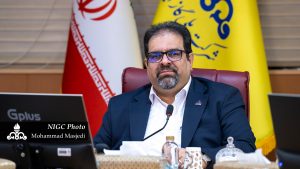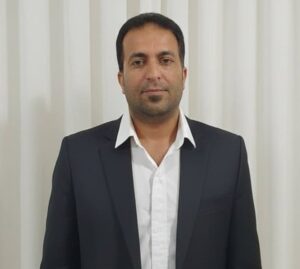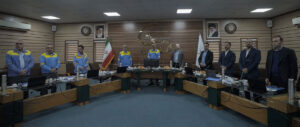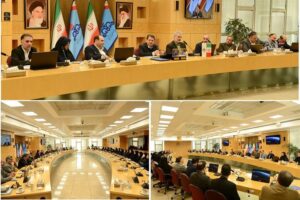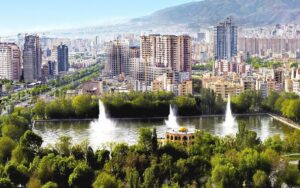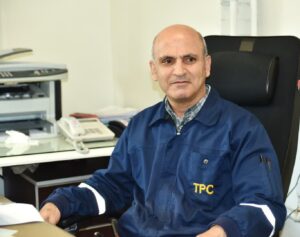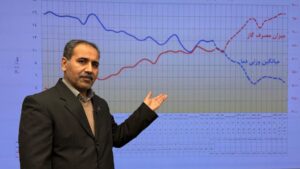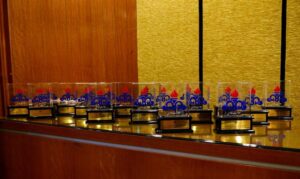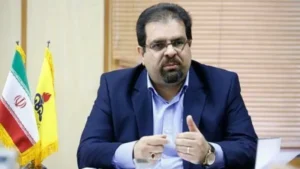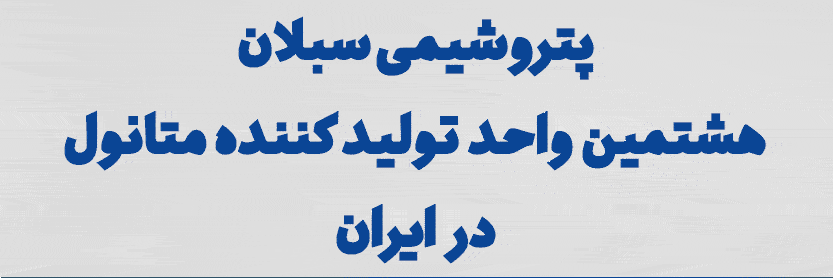The annual general meeting of Esfahan Oil refining Company (EORC) for the fiscal year ending March 20, 2025 was held with the attendance of more than 64 percent of shareholders, and Shapna shareholders agreed to distribute a dividend of 360 rials.
At the beginning of this ceremony, Farhad Amin Dehghan, Chairman of the Assembly and Chairman of the Board of Directors of EORC, honored the memory of the martyrs of the 12-day imposed war and the people’s patient resistance against the enemy’s aggression. He said this assembly will be broadcast online to all shareholders and shareholders can participate in voting in person and online.
The CEO of EORC also referred to the company’s key programs and added in 2023, after the threats caused by changes in crude oil and feedstock prices, the profitability of all refineries decreased in proportion to their production capacities, but under these conditions, Esfahan Oil Refinery remained in the first place in profitability among the country’s refineries.
Gholamreza Bagheri Dizaj referred to the most important projects and strategic axes of EORC and said these projects include refining kerosene (desulfurization) with the aim of improving the quality of kerosene and reducing pollutants, transferring water from the sea and sustainable management of water resources, reviewing projects, and diversifying financial resources.
He stated that the company, relying on its vision and strategy, has developed a 5-year plan that can be upgraded in future periods. He said the main axes of this vision include sustainable and balanced development, becoming a successful petrochemical holding, and achieving the highest complexity factor in the region.
* Esfahan Refinery ranks third in the country’s production of liquefied gas and kerosene.
Referring to the most important products produced by the company, the CEO of EORC he said the company has a 16 percent share of the liquefied petroleum gas (LPG) market in the country and ranks third in the country in the production of this product after the Arak Refinery and Setareh Khalij Fars.
Bagheri Dizaj also pointed to the company’s 14 percent share and third place in kerosene production and added that with the implementation of the kerosene quality improvement plan, this product will mainly be used as feedstock for downstream and chemical industries.
The Vice Chairman of the Board of Directors of EORC continued that the Esfahan Refinery also accounts for 12% of the country’s fuel supply in the field of gasoline production and is considered one of the main players in the production of this product.
* Increase in tax revenue and profit of 32 trillion tomans at Esfahan Refinery
The CEO of EORC stated that the combination and diversity of products produced have not only established the great position of the Esfahan Refinery in the center of the country, but also increased its strategic importance in supplying fuel to the country. He added that the share of oil and gas production in the Esfahan Refinery is 21% of the country’s total production, and in the production of fuel oil, this product is also considered one of the important products of the Esfahan Refinery, with a share of 14%.
Bagheri Dizaj referred to the financial performance of 2023-2024 and said the operating income of the Esfahan Refinery in that year increased from about 412 trillion tomans to 561 trillion tomans, and the increase in the cost of products was due to the increase in the price of feed and products.
He noted that during the year, due to major repairs, the company’s net profit decreased from 39 trillion tomans in 2023-2024 to 32 trillion tomans in 2024-2025. This downward trend in profits occurs in all refineries that carry out major repairs, but despite this, EORC achieved the highest profitability among the country’s refineries last year.
*Two strategic plans at the Esfahan Refinery
The CEO of the Esfahan Refinery referred to the construction of the RFCC and RHU units, which aim to convert fuel oil into products such as gasoline and diesel and added that in the process of working these units, 8 million liters of gasoline and 2 million liters of diesel will be produced from each amount of fuel oil. This will result in the total production of these two products reaching 50 million liters per day.
He stated that with the implementation of the MTBE (octane enhancer) production plan, daily gasoline production at the Esfahan refinery will increase by another 4 million liters; this optimal production mix with the highest complexity factor will ensure ultimate economic profitability and long-term benefits for shareholders.
The Vice Chairman of the Board of Directors of EORC said two key projects, namely the RHU project (phase one, started in 2018) and the RFCC project (phase two, started in 2022), are under implementation. The difference in the start time of these two projects is the main reason for the gap in operation time, and the news about the suspension of the projects is not true, and these projects are being followed up and implemented according to the schedule and with the necessary time gap.
Bagheri Disaj pointed out the more than 70 percent progress of the RHU project and the investment value equivalent to 580 million euros in this plan. He added that with planning and without stopping, the company will put RHU into operation by the end of 2025.
The CEO of Esfahan Refinery also said the progress of about 35 percent of the RFCC project and the value of this project is 886 million euros. He noted this project will be put into operation by 2023 and, based on estimates, this project will generate a profit of 264 million euros.
He stated that the implementation of these projects will improve the fuel supply situation and the balance of energy supply and demand in the country. He said with the implementation of the first phase of the (RHU) project, the company will witness a reduction in gas imbalance, which will make more natural gas available to people and vital industries in the winter, and will also prevent the closure of production units.
Bagheri Dizaj said that in the second phase (RFCC), by converting sweet fuel oil into gasoline and diesel, the problem of gasoline imbalance in the country will be solved, and the refined fuel oil will be converted into Euro 5 standard quality products including gasoline, gas, diesel, and also a strategic product called propylene.
He further explained that propylene quotas are serious in the country and different industries are competing to receive it. In this regard, the company succeeded in allocating a quota of propylene production to Esfahan Petrochemical Company (a subsidiary of the refinery), so that out of the annual capacity of 200,000 tons of propylene production, 60,000 tons will be available to Esfahan Petrochemical Company for processing and conversion.
* Esfahan Refinery KHT Environmental Project to be inaugurated soon
He referred to the company’s annual general meeting and said another important project of the Esfahan Refinery is the KHT project, which will be inaugurated soon. This project is part of the product quality improvement projects and its goal is to reduce the sulfur content of kerosene and increase the quality of fuel, which will enable its sale to downstream industries or use in Euro diesel.
He said in this phase, which is about 97 percent advanced and is on the verge of being put into operation, there is also the possibility of producing 402 solvent. This is an unrivaled product both in the domestic market and in terms of export value.
Bagheri Dizaj said the implementation of the LPG gas production plan by combining propane and butane in this company. He noted that Butane gas has high added value for the refinery, which is currently burned in the units, but with the implementation of the 4C value chain plan in the Esfahan refinery, 4 million liters will be added to the gasoline produced by this company.
Bagheri Dizaj said the nature of the activities of the three companies, Mashal Pooya, Rata, and Mulla Sadra, is such that they have achieved income generation and can operate self-sufficiently, and programs have been defined for the other three companies.
*Construction of a 110,000-barrel refinery in Gachsaran
He referred to the latest steps taken to build a 110,000-barrel refinery and said due to some restrictions, it was not possible to build a 110,000-barrel refinery in the Esfahan refinery, so measures were taken to build this refinery in Bandar Abbas. Due to the inability to clear equipment in this area, another location was planned in Gachsaran. He said if the necessary permits are obtained to allocate a 10 percent discount on crude oil to this refinery, a 110,000-barrel refinery will be built in this area.
He also referred to the implemented projects for the provision and optimal use of water resources at the Esfahan Refinery and said saving water, recycling water, treating wastewater, and transferring water from the Sea of Oman, implementing ZLD and HERO projects, installing hybrid packages and cooling systems, and creating strategic water tanks, have been effective measures taken by this company to reduce dependence on drinking water, and fortunately, effective measures have been taken in this regard so far.
Bagheri Dizaj described the installation of economizers on boilers and optimization of furnaces as a major step in the Esfahan Refinery with the aim of reducing fuel consumption, reducing greenhouse gas emissions, and increasing boiler efficiency. He said the implementation of the social responsibilities of the EORC has been another honor of this company despite all the economic difficulties, which he assessed positively.
In the end, after reading the report of the auditor and the statutory auditor, the company’s financial statements were approved and, based on the decision of the assembly, a profit of 360 rials per share was determined.
The increase in the capital of EORC in March 2025 by 42 percent, the increase in the number of shares from 371 billion to 526 billion and 820 million shares, the selection of the “Donya Eqtesad” newspaper as the official newspaper of the company for placing advertisements, and the selection of Hoshyar Momayez Auditing Firm as the main auditor were other news from the annual general meeting of EORC.
The forum ended with questions from reporters and shareholders and answers from the Chairman of the Board of Directors, CEO, and Deputy Director of Finance, Budget, and Investment of EORC.

